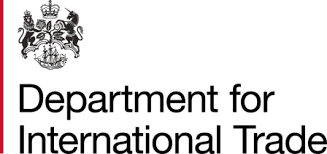Date: 12 - 16 March 2018 Where: Melbourne Extended Application Deadline: 28 November 2017 Registration: Why are we going to Australia? Australia has been one of the best-performing advanced economies in recent decades, avoiding recession for 25 years. Impressive growth has been driven by strong macroeconomic policies such as low interest rates, structural reforms for business productivity and a prolonged commodity boom fuelled by the export of natural resources. Nevertheless, economic growth is gradually slowing due to the combined challenges of an ageing population and a reduction in global demand for Australian commodities. Australia is a highly urbanised country. In 2014, 89% of the population (21 million people) lived in urban areas and forecasts predict that the urbanisation rate will reach 93% (of 31 million people) by 2050. However, this urbanisation is highly localised with the majority of the population concentrated around the more hospitable coastal areas in the South and South-East. 60% of the population live in Australia’s five largest cities – Sydney, Melbourne, Brisbane, Perth and Adelaide. Outside of these areas, the country is extremely sparsely populated. Despite its limited number of large cities, Australia’s cities are the drivers of the country’s economy, with the five largest cities accounting for 79.1% of the national GDP in 2015-2016. Australia has recognised the importance of cities to their economy and appreciates the need to adapt them in order to improve productivity and accessibility. In 2016, the Australian government released a ‘Smart Cities Plan’ which sets out a framework to achieve these aims. Prior to the creation of this plan, there was no unified approach to smart city creation across Australia. Due to this lack of public sector support, the Australian smart city market has developed differently to other markets assessed as part of this exercise. In contrast to smart city markets in India and Japan that have relied heavily on public sector support and the use of demonstrators, Australian cities have been forced to carve their own path, implementing solutions with proven business cases and relying heavily on support from the private sector. Some of Australia’s city challenges, and hence drivers of demand for advanced urban services, are as follows: ● An ageing population ● Resilience to climate change ● Water scarcity ● Urban sprawl ● Housing affordability ● Congestion The Future Cities Mission to Australia programme covers only Melbourne but the Future Cities Mission team can assist with connecting mission participants with city officials, potential partners, investors and relevant opportunities in other cities across Australia too. |
 |
Future Cities Mission to Australia 2018 March 2018 |
| Partners |
 |
 |
 |
 |
 |
Innovate UK, Polaris House, North Star Avenue, Swindon, Wiltshire SN21FL Telephone +44(0)1793 361 000 Email: support@innovateuk.gov.uk www.innovateuk.gov.ukView our Privacy Policy | Copyright © 2017 Innovate UK |
| Mission Partners |
Innovate UK, Polaris House, North Star Avenue, Swindon, Wiltshire SN21FL Telephone +44(0)1793 361 000 Email: support@innovateuk.gov.uk www.innovateuk.gov.ukView our Privacy Policy | Copyright © 2017 Innovate UK |
| Application closed |
| Application closed |
| Application closed |
| Application closed |

